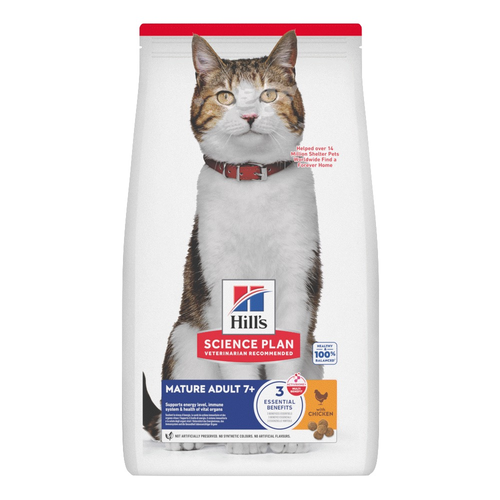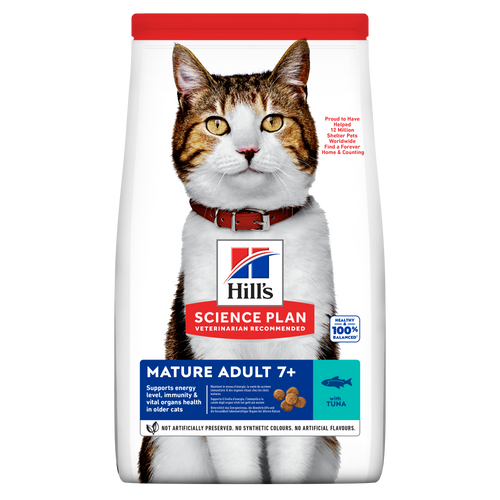
-
Featured products
 Small & Mini Puppy Food
Small & Mini Puppy FoodHill's Science Plan Puppy Small & Mini Breed Dog Food with Chicken is a complete pet food, specially formulated with ActivBiome+ Multi-Benefit Technology.
100% balanced nutrition to support optimal growth & the immune system.Shop Now Small & Mini Adult Dog Food
Small & Mini Adult Dog FoodHill's Science Plan Small & Mini Breed Adult Dog Food with Lamb & Rice is a complete pet food, specially formulated with ActivBiome+ Multi-Benefit Technology.
Tailored nutrition for the unique needs of small dogs during the prime of their life.Shop Now SMALL & MINI MATURE ADULT DOG FOOD
SMALL & MINI MATURE ADULT DOG FOODHill's Science Plan Small & Mini Breed Mature Adult Dog Food with Chicken is a complete pet food, specially formulated with ActivBiome+ Multi-Benefit Technology.
Tailored nutrition to support graceful ageing in small dogs. Specially made with a synergistic blend of nutrients for energy & vigor.Shop NowFeatured products Oral Care Adult Cat Food
Oral Care Adult Cat FoodHill's Science Plan Oral Care Adult Cat Food with Chicken contains clinically proven kibble technology to reduce plaque & tartar build up.
Shop Now Mature Adult Cat Food
Mature Adult Cat FoodHill's Science Plan Mature Adult Cat Food with Chicken is a complete pet food, specially formulated with ActivBiome+ Multi-Benefit Technology.
This food supports graceful aging in cats, providing a synergistic ingredient blend to help support energy & activity levels.Shop Now Mature Adult 7+ Cat Food
Mature Adult 7+ Cat FoodHill's Science Plan Mature Adult Cat Food with Salmon is a complete pet food, specially formulated with ActivBiome+ Multi-Benefit Technology.
This food supports graceful aging in cats, providing a synergistic ingredient blend to help support energy & activity levels.Shop Now -
Dog
- Dog Tips & Articles
-
Health Category
- Weight
- Food & Environmental Sensitivities
- Urinary
- Digestive
- Joint
- Kidney
-
Life Stage
- Adult Nutrition
Cat- Cat Tips & Articles
-
Health Category
- Weight
- Skin & Food Sensitivities
- Urinary
- Digestive
- Kidney
-
Life Stage
- Kitten Nutrition
- Adult Nutrition
Featured articles The Incredible Science Behind Your Pet's Microbiome
The Incredible Science Behind Your Pet's MicrobiomeLearn what your pet's microbiome is, how it contributes to your pet's gut and overall health, and why nutrition is important in maintaining healthy microbiomes.
Read More The Right Diet For Your Pet
The Right Diet For Your PetIn people, the right diet is very important. If you are eating the wrong way for your metabolism, activity level, age and lifestyle you could end up with health issues.
Read More Proteins
ProteinsTo make a protein, amino acids are linked together in a long chain. The chain is then bundled into to a three-dimensional structure, like a tangled ball of yarn.
Read More -


As summer winds down and school routines return, it’s not just kids who feel the change—your dog does too. Dogs thrive on consistency, and when the household shifts from fun-filled days to quiet mornings and busy evenings, it can leave your four-legged family member feeling anxious or left out.
Here are some smart and simple ways to help your dog adjust to the back-toschool transition, reduce stress, and keep their tail wagging.
1. Establish a Consistent Routine
Dogs (and kids) love predictability. Setting and sticking to a daily routine can help everyone adjust more smoothly.
Set consistent times for walks, feeding, and play.
Involve kids with age-appropriate pet care tasks.
Stick to morning and evening schedules as much as possible.
Even a few minutes of structure each morning and evening can go a long way in reducing your dog’s anxiety.
2. Ease Into the New Schedule
A sudden switch from summer freedom to a structured school schedule can be confusing for your dog.
Begin adjusting your routine a week or two before school starts.
Slowly change walk and feeding times to align with the school year.
Practice shorter absences to help your dog adjust to being alone again.
This gradual change helps your pet adapt more comfortably without feeling abandoned.


Tasty Tips
3. Include Your Dog in After-School Activities
Your dog just wants to be with the family! When possible, bring them along for:
After-school park trips.
Walks to school pickups.
Outdoor sports practices (if dog-friendly).
Always bring a chew toy and portable water bowl, and check in advance if the venue allows dogs.
4. Make Home Alone Time More Fun
When your dog goes from summer playmate to being home alone, it can lead to boredom or anxiety.
Hide treats around the house before you leave.
Offer special home-alone toys or puzzle feeders.
Rotate toys to keep them novel and exciting.
These activities encourage mental stimulation and make solo time feel less lonely.
5. Encourage Kid-and-Dog Playtime
Build in time for your children to bond with your dog, especially after school.
Teach your kids simple games like fetch, hide and seek, or obstacle courses.
Play before dinner or evening activities begin.
Make it part of the daily routine to help your dog feel connected.
It’s a fun way to help your dog stay active and feel appreciated—and it helps your kids unwind too!
Final Thoughts
Back-to-school season doesn’t have to be stressful for your dog. With a little planning, creativity, and family involvement, you can make the transition smoother and even fun. Get your kids involved in brainstorming ways to help your dog adjust—after all, they often come up with the most imaginative (and effective) ideas!


One of our staff authors prepared this article for you
Related products

Hill's Science Plan Small & Mini Breed Adult Dog Food with Lamb & Rice is a complete pet food, specially formulated with ActivBiome+ Multi-Benefit Technology.
Tailored nutrition for the unique needs of small dogs during the prime of their life.

Hill's Science Plan Light Adult Small & Mini Breed Dog Food with Chicken is a complete pet food, specially formulated with ActivBiome+ Multi-Benefit Technology.
Helps keep your dog fit and active with our low calorie, great-tasting food.
Precise nutrition for less active adult small dogs that require a low calorie food to help maintain a healthy weight & lifestyle.

Hill's Science Plan Puppy Small & Mini Breed Dog Food with Chicken is a complete pet food, specially formulated with ActivBiome+ Multi-Benefit Technology.
100% balanced nutrition to support optimal growth & the immune system.

Hill's Science Plan Small & Mini Breed Mature Adult Dog Food with Chicken is a complete pet food, specially formulated with ActivBiome+ Multi-Benefit Technology.
Tailored nutrition to support graceful ageing in small dogs. Specially made with a synergistic blend of nutrients for energy & vigor.
Related articles

Learn about the symptoms, causes and treatments of dry puppy skin and how to provide relief for your dog. For expert skin care advice, visit Hill's Pet MT.

Learn the the dangers of feeding your dog chocolate, which types are most dangerous, and what to do if you discover that they have consumed chocolate.

Learn what you can feed your pregnant or nursing dog to keep her and her new pups healthy.

Learn more about the problem of dog obesity and more importantly, what you can do to help your dog avoid becoming overweight.

Put your dog on a diet without them knowing
Our low calorie formula helps you control your dog's weight. It's packed with high-quality protein for building lean muscles, and made with purposeful ingredients for a flavorful, nutritious meal. Clinically proven antioxidants, Vitamin C+E, help promote a healthy immune system.
Put your dog on a diet without them knowing
Our low calorie formula helps you control your dog's weight. It's packed with high-quality protein for building lean muscles, and made with purposeful ingredients for a flavorful, nutritious meal. Clinically proven antioxidants, Vitamin C+E, help promote a healthy immune system.

